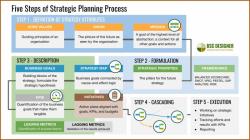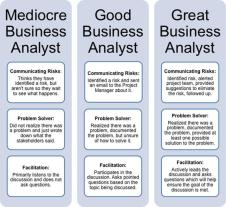How do you ensure the communication of Business Information?
Ensuring effective communication of business information means making sure the right people receive the right information, in the right format, at the right time — and that they understand and can act on it. Here’s a structured approach you can follow:
1. Clarify the Purpose and Audience
Define the goal — Is the information meant to inform, persuade, request action, or provide a record?
Identify the audience — Know their level of expertise, interests, and preferred communication style.
Tailor the message — Adjust tone, vocabulary, and format based on who will receive it.
2. Use the Right Communication Channels
Formal channels — Reports, memos, official emails, presentations, meetings.
Informal channels — Chats, team huddles, instant messaging (for quick updates).
Choose based on urgency and complexity — For example, urgent but complex matters may need both an email and a meeting to ensure clarity.
3. Ensure Message Clarity and Accuracy
Be concise but complete — Avoid jargon unless the audience understands it.
Use structured formats — Headings, bullet points, and visuals to make complex info digestible.
Fact-check — Verify data before sending; errors damage trust.
4. Encourage Two-Way Communication
Invite questions and feedback — This ensures the receiver has understood the message correctly.
Acknowledge receipt and understanding — Confirm important messages were read and understood.
Listen actively — Don’t just broadcast; engage in dialogue.
5. Support with the Right Tools
Collaboration platforms — Slack, Teams, Trello, Asana for tracking and transparency.
Document management — Google Workspace, SharePoint for version control and accessibility.
Data visualization — Charts and dashboards for quick comprehension.
6. Monitor and Follow Up
Check for understanding — Ask for summaries or action plans from the recipient.
Set timelines and responsibilities — Ensure everyone knows who does what, and by when.
Evaluate communication effectiveness — Use surveys, project reviews, or KPIs (like task completion rates) to see if the message had the intended impact.
7. Foster a Communication Culture
Be consistent — Use regular updates and established formats.
Encourage openness — Make it safe for employees to ask for clarification.
Provide training — Communication skills, writing, and presentation workshops improve overall effectiveness.
Quick Checklist for Effective Business Communication
✔ Purpose clear
✔ Audience identified
✔ Channel appropriate
✔ Message concise and accurate
✔ Feedback encouraged
✔ Follow-up in place
How to Ensure Effective Communication of Business Information?
Effective business communication is the cornerstone of a successful organization. It's not just about sharing information; it's about ensuring that the message is understood, accepted, and acted upon. To achieve this, it's crucial to first be clear and concise. Vague or overly complex language can lead to misunderstandings and errors. Get straight to the point and use simple, direct language.
Equally important is to listen actively. Communication is a two-way street. Before you can effectively convey your message, you need to understand your audience's needs and concerns. This shows respect and helps you tailor your message appropriately.
Finally, always be mindful of context. The timing, the cultural background of the audience, and the current business situation all influence how a message is received. An email that works for a quick update might not be suitable for a sensitive conversation about layoffs.
What Are Best Channels for Business Communication?
The best communication channel depends on the message's purpose, urgency, and audience. There's no one-size-fits-all solution.
For formal, detailed, or permanent records, written channels like email and memos are ideal. They provide a clear, traceable record of the information. For urgent or complex matters, instant messaging platforms like Slack or Microsoft Teams can facilitate quick, back-and-forth conversations.
When a message requires nuance, immediate clarification, or a personal touch, face-to-face communication or video conferencing is often best. This is particularly true for performance reviews, brainstorming sessions, or conflict resolution. Phone calls are a good middle ground for quick discussions that don't require visual cues.
How to Tailor Business Information for Different Audiences?
Tailoring your message for your audience is critical for effective communication. The same information presented to a senior executive will be different from a frontline employee.
For executives and senior leaders, focus on the big picture. They need to know the bottom line: the impact on revenue, cost, and overall strategy. Use data, charts, and summaries to present information efficiently.
For employees and team members, the focus should be on how the information affects their daily work. Explain the "why" behind the decision and provide clear, actionable steps. Use language that is relevant to their specific roles and responsibilities.
For external stakeholders, like clients or investors, the message must be professional and highlight value. Explain how your product or service benefits them, or how the company is performing financially.
What Role Does Feedback Play in Business Communication?
Feedback is the engine of effective communication. It's how you know if your message was received and understood. Without feedback, you're essentially just talking into a void.
Constructive feedback helps you identify and correct communication issues. It allows you to gauge whether your message was clear, if the tone was appropriate, and if the channel was effective. For leaders, seeking feedback from their teams builds trust and creates a more open, transparent work environment.
For employees, providing feedback to managers or colleagues ensures that their voices are heard and that processes can be improved. It's a key part of problem-solving and innovation. Regular, structured feedback loops, whether through one-on-one meetings, surveys, or open-door policies, are vital for a healthy communication culture.
How to Overcome Barriers in Business Information Flow?
Information flow can be obstructed by several common barriers. Being aware of them is the first step to overcoming them.
Lack of Clarity: Vague messages are a major barrier. Overcome this by using simple, direct language and providing examples where necessary.
Physical Barriers: This includes poor acoustics, distance between employees, or inadequate technology. Address this by investing in better technology for remote workers and ensuring meeting spaces are conducive to conversation.
Emotional Barriers: A person's mood, stress level, or personal biases can distort how a message is received. Overcome this by creating a respectful and empathetic workplace culture where people feel safe to express themselves.
Cultural Barriers: Different cultures have different norms for communication. To overcome this, be mindful of cultural differences, and when in doubt, be respectful and ask for clarification.
Lack of Trust: When trust is low, people are less likely to share information openly. Build trust through consistent, transparent, and honest communication from leadership.
By proactively addressing these barriers, organizations can create a more fluid and effective flow of business information.












